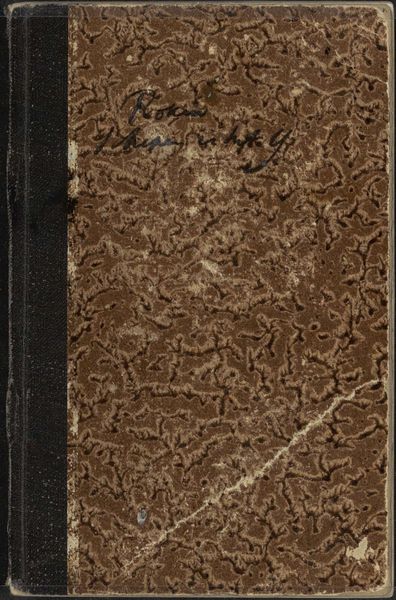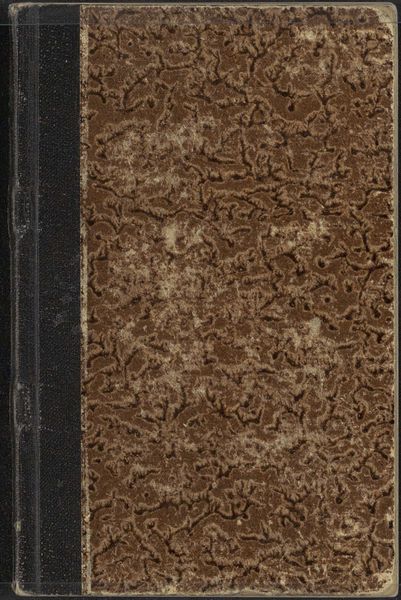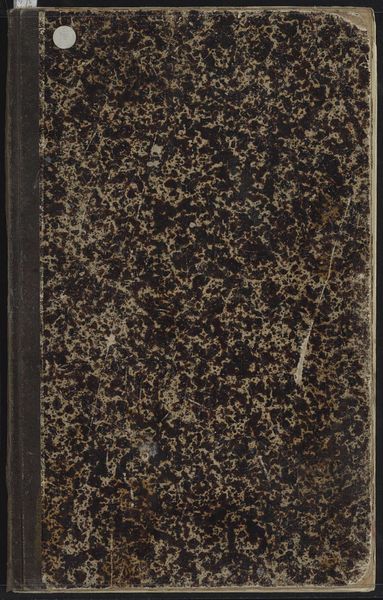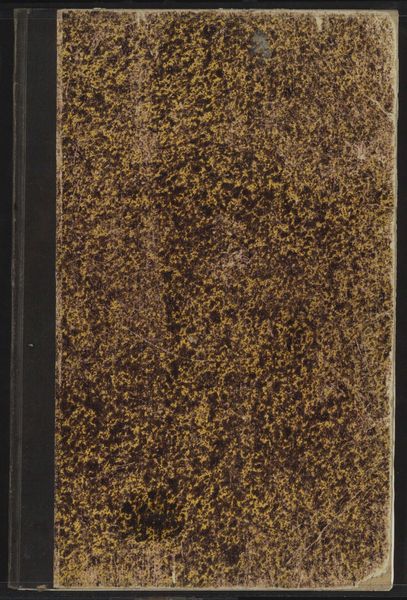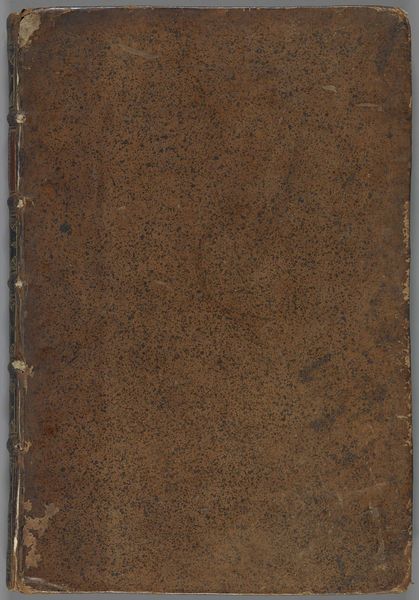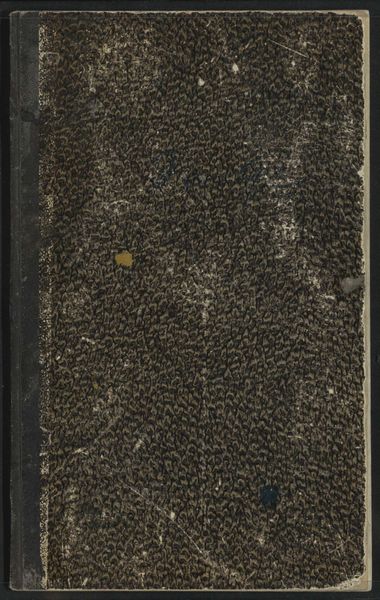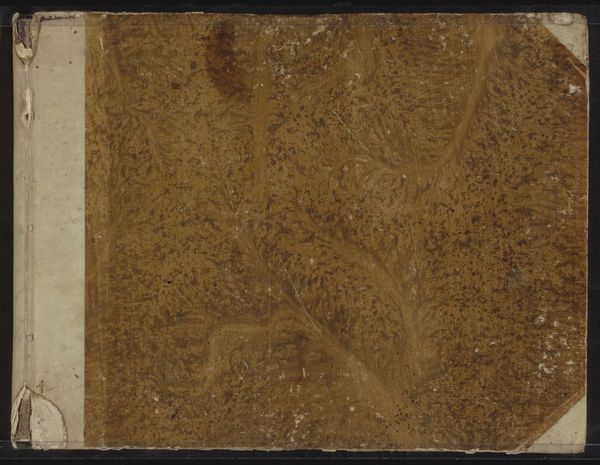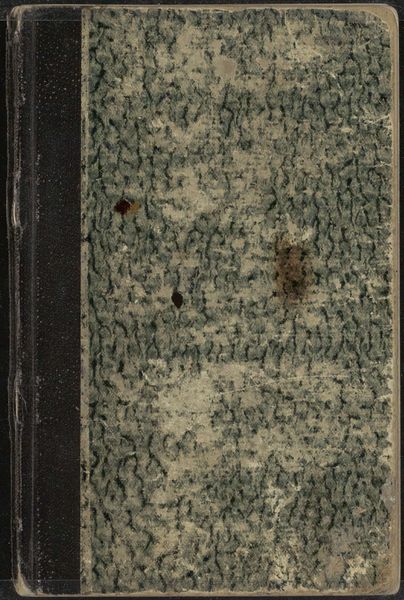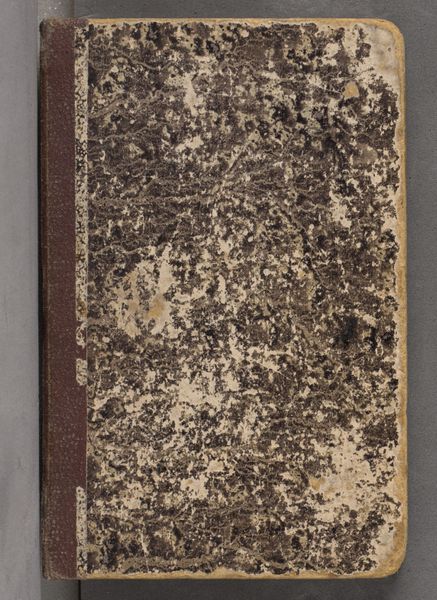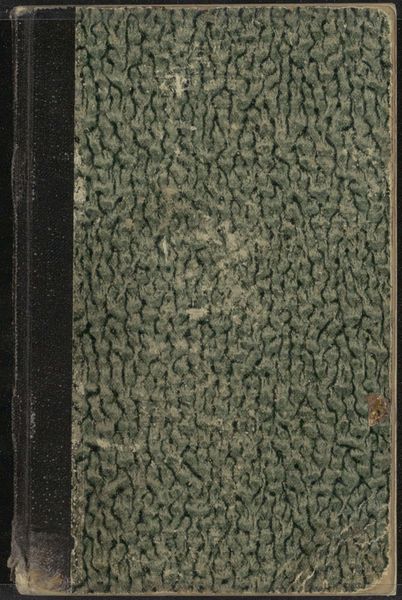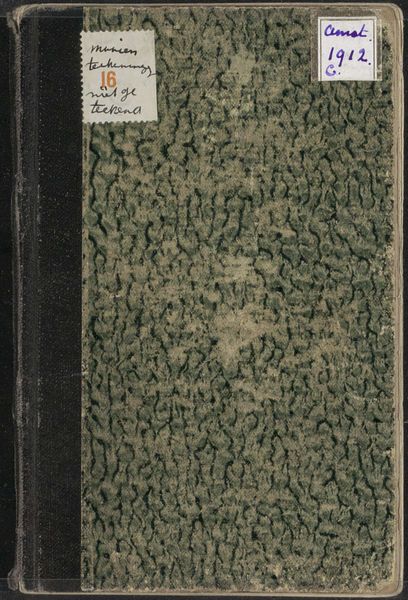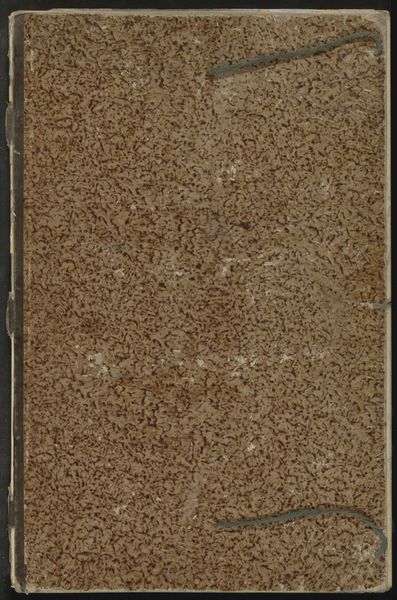
drawing, paper, wood, architecture
#
drawing
#
wood texture
#
toned paper
#
worn
#
paper
#
wood
#
texture
#
natural texture
#
organic texture
#
architecture
Dimensions: height 203 mm, width 167 mm, thickness 11 mm, width 331 mm
Copyright: Rijks Museum: Open Domain
Curator: Well, hello there. I find this sketchbook surprisingly evocative. There's something about its modest presentation that invites closer examination. Editor: It does look well-used, doesn't it? Almost…comfortably worn. There's a texture there that's just asking to be touched, you know? What can you tell me about it? Curator: This is "Schetsboek met 76 bladen"—or, Sketchbook with 76 Sheets—by Cornelis Vreedenburgh. Dating between 1890 and 1946, it resides here at the Rijksmuseum. We believe it features a wood and paper construction. Editor: Late 19th to mid-20th century…That range alone piques my interest. What was Vreedenburgh capturing in here that spanned such tumultuous times? The materiality alone suggests a lot: inexpensive and meant for casual everyday observations and use. Curator: Exactly! A sketchbook, after all, isn’t intended to be precious, but rather a place for experimentation and the casual capturing of thought. Given its architecture tag, there’s also potentially encoded spatial relations here, memories of place filtered through Vreedenburgh's specific lens. Editor: Look closely; that cover mimics natural textures, an artificial rendering of, perhaps, woodgrain? And what sort of paper did they use inside? That creamy color isn't what we’re used to these days... Curator: Given the range of date, and the intended purpose of utility and access, I can almost guarantee there are numerous paper and drawing support types within. Each with its own process, affordance, and story of industrialisation. Editor: Right. You can imagine him reaching for this, perhaps hundreds of times. Each marking in the book tells of gesture, but the book, as an object, reveals habits of making as a material document. Curator: The drawings within no doubt show how he viewed his immediate surroundings. From my perspective, a symbol such as a drawing support of a landscape indicates the human need to understand, categorize, and find beauty in the world around them, whatever the medium. Editor: I think, considering it as a cultural object, we understand better how art’s social reality becomes internalized, represented, and felt on a day to day basis by Vreedenburgh. Curator: Beautifully said. These personal records remind us how important physical connection can be and about art that isn’t so serious that everyone, at any skill level, can take part. Editor: Definitely. And for me, a great lesson to remember to observe the context and materiality of the image.
Comments
No comments
Be the first to comment and join the conversation on the ultimate creative platform.
